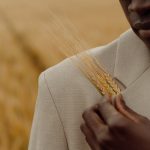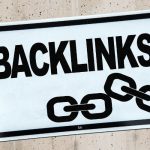Introduction: Why Sustainable Fashion Is No Longer a Trend but a Business Imperative
In 2025, sustainable fashion is no longer just a marketing buzzword — it’s one of the most powerful movements reshaping the global eCommerce landscape. Consumers, particularly Gen Z and Millennials, are demanding brands that reflect their values: transparency, ethics, and environmental responsibility. What’s striking is how fast these expectations have become the norm.
Around 78% of shoppers now consider sustainability important when making purchasing decisions. Products marketed as environmentally responsible are growing almost three times faster than standard ones, and resale marketplaces are rapidly becoming mainstream. The customer doesn’t just want stylish clothes anymore — they want meaning, ethics, and reassurance that their purchase doesn’t cost the Earth.
For web designers and digital strategists, this presents a golden opportunity: helping brands express those values authentically through thoughtful, intelligent eCommerce design.
1. Market Dynamics & Pressures in Sustainable Fashion
A. The Resale and Circular Economy Boom
Resale fashion is no longer a niche concept — it’s redefining how consumers engage with brands. By 2025, resale is expected to account for around 10% of global apparel sales. Many fashion houses are now hosting second-hand sections directly on their official websites, allowing them to retain customers and control the brand narrative even in the pre-owned market.
Artificial intelligence and improved search capabilities are enhancing these experiences, allowing buyers to find pre-loved items effortlessly while ensuring trust and authenticity.
For designers, this means understanding how to create resale flows — including filtering by condition, authentication badges, and trade-in programmes — that feel natural and premium.
B. Regulatory and Environmental Pressures
Across Europe, the United Kingdom, and parts of Africa, stricter environmental regulations are forcing the industry to become more transparent. From packaging and textile sourcing to carbon reporting and waste management, brands are now expected to prove their environmental claims.
As a designer or strategist, you play a critical role in helping clients communicate sustainability credibly through transparency pages, interactive impact reports, and detailed product storytelling.
2. Consumer Psychology and Behaviour Shifts in 2025
A. Values Over Price — Within Reason
Affordability remains important, but today’s consumer is more than willing to pay a small premium for sustainable products. Studies show most shoppers are happy to spend slightly more on items that align with their ethics, provided the design and experience justify it.
This is where great design becomes vital — clean layouts, persuasive visuals, and emotional storytelling all reinforce why a sustainable product deserves a higher price tag.
B. Authenticity and Storytelling Matter More Than Ever
Shoppers are sceptical of vague “eco-friendly” claims. They want the full story — where materials come from, who made their clothes, and how each product impacts the planet.
A compelling eCommerce site doesn’t simply list products; it tells a story. For example:
- Showing the origin of fabrics through visuals.
- Highlighting ethical production through micro-videos or infographics.
- Including carbon or water-saving metrics right on product pages.
The more transparent and emotionally engaging your design, the stronger the trust you build.
C. Brand Hopping and the Demand for Filters
Modern shoppers are highly selective, comparing multiple brands before making a decision. They expect easy filtering tools that allow them to sort by eco credentials — for instance, organic, recycled, vegan, or fair-trade materials.
Designing intelligent filtering systems isn’t just a UX improvement — it’s a strategic tool that keeps customers browsing within your client’s store rather than leaving to compare elsewhere.
3. Design and UX Features Defining Success in 2025
| Feature | Why It Matters in Sustainable Fashion | Example or Idea |
|---|---|---|
| Sustainability Badges & Impact Indicators | Shoppers want quick visual reassurance of a product’s environmental benefit. | “This jacket saves 30 L of water compared with conventional manufacturing.” |
| Trade-in or Resale Flow Integration | Encourages circular consumption and keeps customers within the brand’s ecosystem. | Allow customers to return or resell items through the same platform. |
| Transparency & Story Overlays | Adds educational context without leaving the buying flow. | Hovering over “Materials” reveals origin, craftsmanship, and certifications. |
| Fit & Size Prediction Tools | Reduces returns and environmental impact from unnecessary shipping. | Incorporate image-based or AI-driven size guides. |
| Carbon-Aware Shipping Options | Gives customers the choice to offset or choose greener delivery. | Offer slower but lower-impact shipping alternatives at checkout. |
| Advanced Filtering Systems | Helps customers shop according to their values. | Filters such as “organic cotton”, “recycled polyester”, “low carbon footprint”. |
These features elevate not only the shopping experience but also a brand’s credibility.
4. Key Trends to Leverage Over the Next Two Years
A. AI-Enhanced Personalisation
Artificial intelligence is enabling personalised product suggestions that go beyond “you may also like”. In sustainable fashion, AI can recommend eco-friendly alternatives to conventional items, guiding shoppers towards lower-impact choices that still match their preferred style.
B. Digital Fashion and Virtual Try-Ons
Digital-only fashion and augmented reality try-ons are no longer futuristic concepts. Many forward-thinking brands are offering virtual dressing rooms, digital lookbooks, and NFT-style limited editions that bridge the gap between online identity and real-world products.
For designers, integrating these immersive experiences can dramatically increase engagement and perceived innovation.
C. Micro-Drops and On-Demand Production
Instead of producing vast seasonal collections, brands are adopting “micro-drops” — smaller, data-driven product releases that reduce waste. This approach calls for agile web design that supports quick updates, countdown timers, and limited-edition campaigns.
D. Social Commerce and Community-Led Design
TikTok, Instagram, and similar platforms continue to merge social interaction with commerce. In sustainable fashion, authenticity reigns supreme — real people wearing real products, honest reviews, and creator collaborations.
Designs that highlight community content, encourage user submissions, and feature social proof can dramatically improve conversion and trust.
5. Challenges and How to Overcome Them
- Higher Production Costs: Sustainable materials and ethical labour can reduce profit margins. Solve this by communicating value clearly and positioning products as premium.
- Return Logistics: Returns contribute to emissions. Use improved fit guidance and accurate imagery to reduce them.
- Greenwashing Risks: Avoid vague claims. Provide evidence and transparency for every sustainability statement.
- Consumer Fatigue: Balance eco-messaging with lifestyle and design appeal. Inspire rather than lecture.
Conclusion: Why Sustainable Fashion eCommerce Is an Opportunity, Not a Limitation
The sustainable fashion market in 2025 offers enormous potential for designers, developers, and entrepreneurs who understand both aesthetics and ethics. Consumers are increasingly voting with their wallets, choosing brands that reflect their beliefs.
By combining:
- Authentic storytelling,
- Circular design principles,
- Smart personalisation, and
- A transparent, emotionally intelligent UX,
you can create online stores that don’t just sell products — they build movements.
Sustainability is no longer the niche. It’s the new standard. And those who embrace it today will lead the eCommerce world tomorrow.












